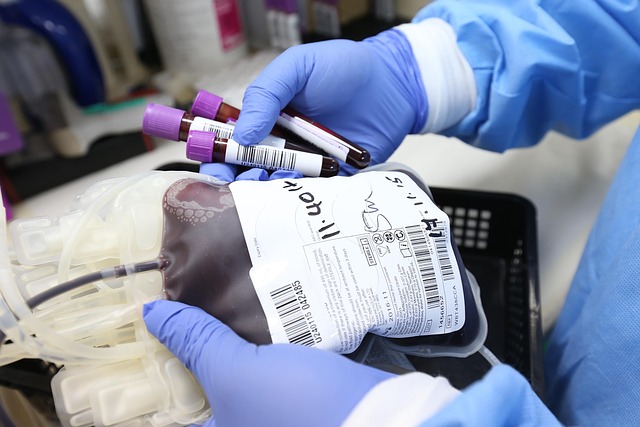Multiple Myeloma Treatment Options, Survival Rates, Prognosis, and Life Expectancy in the United States 2025
Five-year survival for multiple myeloma in the United States has improved to about 62% (2025). Understanding current treatments, survival trends, and prognosis factors helps patients and caregivers make informed decisions. This article reviews therapies, outcomes, and factors affecting life expectancy.

Understanding Multiple Myeloma and Its Diagnosis
Multiple myeloma is a cancer of plasma cells, a type of white blood cell found in bone marrow responsible for producing antibodies. When these plasma cells become malignant, they multiply uncontrollably, causing symptoms such as bone pain, fractures, fatigue, infections, and kidney issues. Diagnosis involves blood and urine tests for monoclonal proteins, bone marrow biopsies, and advanced imaging techniques like whole-body MRI or FDG-PET/CT scans.
Multiple myeloma exists in two primary forms:
- Smoldering Multiple Myeloma (SMM): A precursor asymptomatic phase diagnosed via lab and imaging criteria, often monitored without immediate treatment.
- Active Multiple Myeloma: A symptomatic disease requiring intervention.
Current Treatment Approaches in the United States (2025)
Multiple myeloma treatment relies on a personalized approach depending on patient fitness, disease stage, and risk profile. While the disease remains incurable, therapies aim to achieve remission, prolong survival, and improve quality of life.
Standard Drug Therapies
- Proteasome Inhibitors: Drugs like bortezomib and carfilzomib disrupt the tumor cell’s protein degradation system, inducing cancer cell death.
- Immunomodulatory Agents: Lenalidomide and pomalidomide enhance the immune response and have become foundation therapies.
- Monoclonal Antibodies: Daratumumab and isatuximab target the CD38 antigen on myeloma cells, improving remission depth.
- Corticosteroids: Dexamethasone remains part of many combination regimens.
Combination Regimens
Newly diagnosed patients typically receive triplet or quadruplet drug regimens combining the above agents. For example, the combination of bortezomib, lenalidomide, and dexamethasone (VRd) is widely used. Recent FDA approvals in 2024–2025 introduced subcutaneous daratumumab with VRd and isatuximab with VRd, especially for those ineligible for stem cell transplant.
Stem Cell Transplantation
Autologous stem cell transplantation (ASCT) involves collecting a patient’s own stem cells, followed by high-dose chemotherapy and re-infusion to rebuild bone marrow. ASCT is considered standard for eligible patients, usually under age 65 with good overall health. Induction therapy precedes transplantation, and maintenance therapy post-transplant helps prolong remission.
Maintenance Therapy
Maintenance therapy, mainly using lenalidomide, has been shown to extend progression-free survival significantly—often from about two years to nearly four years or more. In some cases, carfilzomib or daratumumab is added for enhanced effectiveness, particularly in high-risk patients.
Emerging and Advanced Treatments
- CAR T-Cell Therapy: Customized immune cell therapy offers promising results for relapsed or refractory myeloma but involves complex manufacturing processes causing treatment delays.
- Bispecific Antibodies: Agents like teclistamab offer off-the-shelf immune engagement that can be administered immediately, sometimes as a bridge to CAR T therapy. Their use is expanding into earlier lines of treatment.
Survival Rates and Prognosis Insights
Based on data collected between 2015 and 2021 by the National Cancer Institute’s SEER program and reviewed in 2025:
- The five-year relative survival rate for multiple myeloma patients in the United States is approximately 62%.
- Early-stage or localized plasmacytoma has a higher survival rate of about 81%.
- Prognosis varies widely depending on:
- Disease stage and burden.
- Cytogenetic risk profiling (high-risk mutations are linked to poorer outcomes).
- Patient age, overall health, comorbidities, and functional status.
High-Risk Versus Standard-Risk Disease
About 25% of new cases are categorized as high-risk multiple myeloma, which tends to relapse aggressively with median survival around two years or less. These patients often require more intensive treatment regimens and may benefit from participation in clinical trials exploring novel therapies.
Standard-risk patients generally experience better outcomes due to advances in drug combinations and supportive care.
Smoldering Multiple Myeloma and Monitoring
SMM management focuses on close clinical and laboratory surveillance every 3 to 6 months. For patients with high-risk SMM, early treatment with lenalidomide has demonstrated delayed progression to symptomatic disease and improved survival rates. Imaging and biomarker assessments guide ongoing monitoring and treatment decisions.
Life Expectancy Factors in Multiple Myeloma
Life expectancy in multiple myeloma is influenced by a combination of factors:
- Disease Characteristics: Stage at diagnosis, cytogenetic abnormalities, and tumor burden.
- Patient Health Status: Age, performance status, organ function, and presence of other illnesses.
- Treatment Response: Depth and duration of remission achieved through therapy.
- Access to Emerging Therapies: Use of novel agents and clinical trials.
While a definitive cure is not yet available, functional cures—where patients live long enough to die from unrelated causes—are more common with current advances.
Monitoring and Prognostic Tools
International guidelines recommend regular laboratory tests to track monoclonal protein levels and bone marrow assessments for minimal residual disease. Annual or more frequent imaging supports early detection of progression. These tools inform response assessment and help clinicians adjust treatment plans to optimize outcomes.
The Future Outlook in 2025 and Beyond
The ongoing development and approval of new therapeutics, including bispecific antibodies and CAR T-cell products, are expected to further improve survival rates and patient quality of life. Research efforts focus on better treatments for high-risk patients and determining optimal treatment duration, including potential therapy discontinuation in sustained deep responders.
Participation in clinical trials remains a valuable option for many patients, offering access to cutting-edge treatments and contributing to advances in multiple myeloma care.
Sources
- American Cancer Society. Survival Rates for Multiple Myeloma. cancer.org
- Memorial Sloan Kettering Cancer Center. Multiple Myeloma: Improved Prognosis With the Latest Treatments. mskcc.org
- Medscape. Multiple Myeloma Treatment & Management. emedicine.medscape.com
Disclaimer: Treatment availability and drug approvals may vary by location and over time. Readers should consult medical professionals and current clinical guidelines for individualized care decisions.




